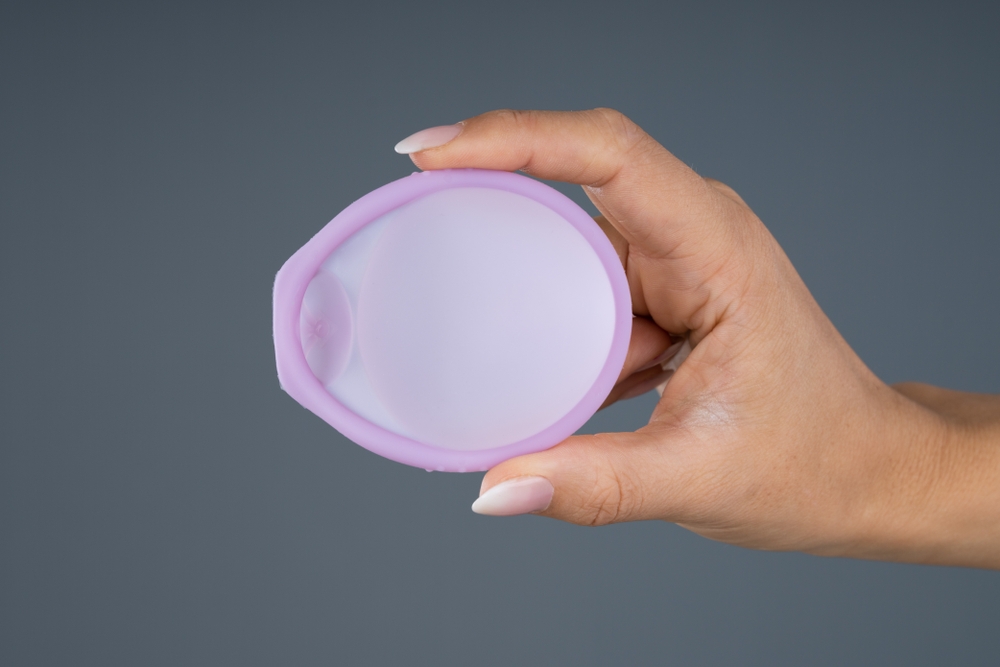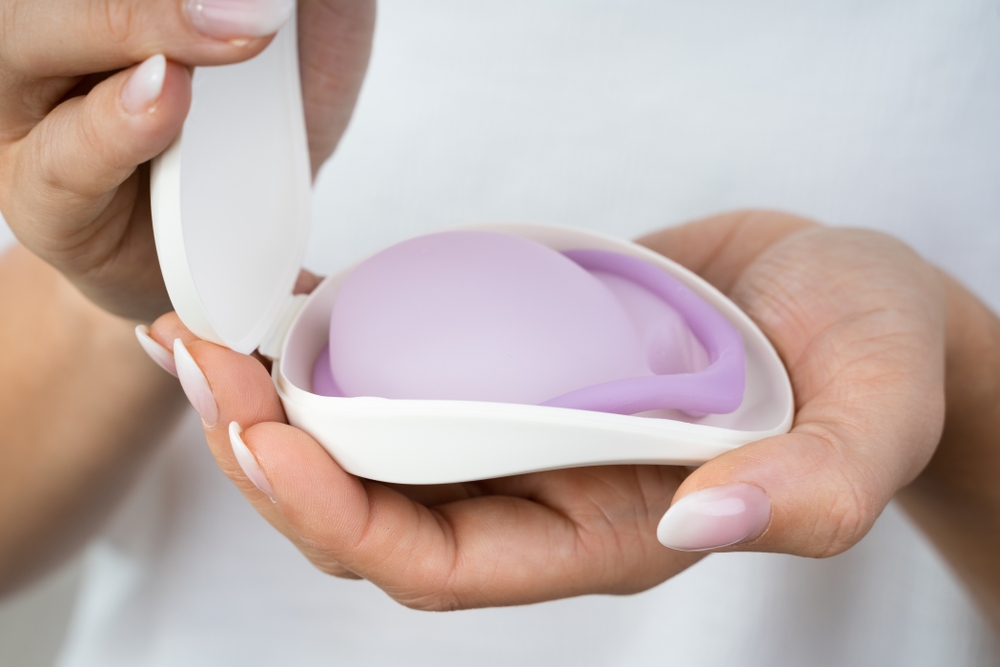
Vaginal contraceptive ring belongs to a slow-release contraceptive system. Its principle is to install contraceptive steroid hormone on a carrier, make it into a ring and put it into the vagina, release small doses of hormone every day, and use vaginal mucosal epithelium to directly absorb drugs into blood circulation to produce contraceptive effect. Vaginal ring can be placed and taken out by women themselves, which is convenient to use.
Configuration of the ring: homogeneous type, core type, shell type and collagen band type. At present, rings with a diameter of less than 60mm are generally used, and the cross-sectional diameter of the tube is less than 9.5 mm.
It is applicable to women who voluntarily choose this method to avoid pregnancy.
For women with vaginal cervix inflammation, vaginal anterior and posterior wall swelling, uterine prolapse, urinary incontinence, repeated urinary tract infection, severe constipation, etc., vaginal contraceptive rings are not suitable for selection.
Advantages:
1) The vaginal contraceptive ring has the characteristics of sustained release system, and the blood drug concentration is low and constant during the whole medication period, with little influence on the whole body.
2) that absorption of drug by vaginal mucosa is completely reliable, and the drug can avoid the first-pass effect of liver metabolism, thus reducing the dosage and enhancing the drug effect.
3) that local release of the drug from the reproductive tract reach the nearby target organ, so that the contraceptive effect can be achieved with a low release amount, and the adverse reaction can be alleviated.
4) The vaginal contraceptive ring with pure progesterone does not inhibit lactation, and the drug enters the milk in a very small amount, thus causing no damage to nursing infants.
5) Women can master it by themselves, use it without discomfort, and it is convenient and effective.
Disadvantages:
1) Irregular bleeding of menstruation is related to fluctuation of progesterone level.
2) Decoupling, sometimes women do not pay attention to can cause contraceptive failure, especially squatting defecation or abdominal pressure of heavy manual workers.
3) Stimulate vaginal mucosa and cause mucosal erosion.
Types of vaginal rings
Vaginal Contraceptive Ring Releasing Simple Progesterone;
WHO levonorgestrel-containing vaginal contraceptive ring contains levonorgestrel 6mg (Varlevo-20), which is released 20g per day. The outer diameter of the ring is about 55.6 mm, the thickness is 9.5 mm, and the core diameter is 3.5 mm. It can last for at least 90 days.
U.S. Population Council Releases Natural Progesterone Progesterone Vaginal Ring, Average Release Volume 10mg/d, Can Be Used Continuously for 3 Months. Suitable for Lactation Women, Can Prolong Lactation Amenorrhea Time, and Does Not Cause Any Adverse Effect on Infants.
The domestic silicone ring containing megestrol contains 200mg or 250mg of megestrol, 100g of which is released daily, placed once, contraceptive for one year, and not taken out during menstruation.
Compound Vaginal Contraceptive Ring Releasing Estrogen and Progesterone:
Levonorgestrel estradiol vaginal contraceptive rings contain levonorgestrel 97 ~ 140mg and estradiol 46 ~ 66mg. There are two kinds of rings, with outer diameters of 50mm and 58mm and ring cross-sectional diameters of 7 ~ 9.5 mm.
The etopregnene ethinylestradiol vaginal contraceptive ring contains etopregnene 11.7 mg and ethinylestradiol 2.7 mg. The diameter of the ring is 54mm and the cross-sectional diameter is 4mm. The ring was placed on the first day of menstruation, taken out after 3 weeks, and another ring was put down after stopping use for 1 week.
When did what place it?
Not having sex after the last normal menstruation; Correct and continuous use of reliable contraceptive methods; Within 7 days of normal menstruation; Within 4 weeks after delivery for women who have not breast-fed; Within 7 days after (natural) abortion; For amenorrhea caused by exclusive breast-feeding within 6 months after delivery, the user shall put it into the vagina by himself.
The simple progesterone vaginal ring is mostly used continuously and is put into the vaginal ring on the 5th day of the menstrual cycle.
According to the different drug loading and service life, WHO vaginal ring can be used continuously for 90 days and domestic silyl ring for 1 year.
Compound vaginal contraceptive rings containing estrogen and progesterone are generally placed periodically, from the 5th day of menstruation, for 3 weeks and for 1 week.
Withdrawal bleeding may occur during removal. The service life varies from ring to ring.
Generally, the vaginal ring does not need to be taken out during sexual intercourse. If you feel unwell, you can take it out and put it back in less than 3 hours after sexual intercourse, which will not affect its effect. When it falls off naturally, women can clean it and put it back into the vagina.
How effective is contraception and there will be adverse reactions to what?
The pregnancy rate of vaginal contraceptive ring containing levonorgestrel was 3.6% one year.
The pregnancy rate of silicone vaginal contraceptive ring containing megestrol was 0.6% one year.
Release of natural progesterone progesterone vaginal contraceptive ring pregnancy rate 1.5% one year.
The pregnancy rate of levonorgestrel estradiol vaginal contraceptive ring is 0.7% ~ 1.8% one year.
The pregnancy rate of vaginal contraceptive ring relying on pregnancy enylethinylestradiol is 1% ~ 2% for one year.
Adverse reactions:
1) Headache.
2) Vaginal foreign body sensation and sexual discomfort.
3) Menstrual disorder, including intermenstrual hemorrhage, prolonged hemorrhage and massive hemorrhage, 70% of which occurred within the first half year of use.
4) vaginal secretion increase, vaginitis.
5) Gastrointestinal reactions. Drugs are absorbed directly into the circulation through vaginal mucosa, avoiding some politics caused by gastrointestinal absorption, so adverse reactions are relatively few. The most common is nausea, with an incidence rate of about 20%, mainly occurring within 48 hours after placement, and the symptoms improve with the prolonged use time.
6) shedding, which may be related to the number of production.
7) The effect on lipid metabolism can be seen as the decrease of high density lipoprotein-cholesterol (HDL-C) and the increase of low density lipoprotein (LDL)/high density lipoprotein (HDL) ratio, with progesterone as the main expression. This change can be recovered after stopping the vaginal ring.

Under what circumstances is it prohibited?
Disabled condition:
1) Thrombophlebitis or thromboembolic disease, deep phlebitis or venous embolism history.
2) Cerebrovascular or cardiovascular diseases.
3) hypertension, blood pressure > 160/100 mmHg.
4) known or suspect breast cancer.
5) known or suspect estrogen-dependent tumor.
6) Endocrine diseases: diabetes mellitus with renal or retinopathy and other cardiovascular diseases.
7) benign and malignant hepatic tumor.
8) Liver function injury in cirrhosis and active stage of viral hepatitis.
9) Acute or chronic hepatitis or nephritis.
10) pregnancy.
11) Breastfeeding within 6 weeks after delivery.
12) Abnormal vaginal bleeding of unknown cause.
13) Smoking ≥ 20 cigarettes per day, especially for women aged ≥ 35 years.
14) Partial malignant tumors and precancerous lesions.
15) Psychiatric patients.
16) severe migraine with focal neurological symptom at any age.
Caution:
1) Hypertension < 160/100 mmHg, blood pressure should be monitored regularly.
2) Diabetes mellitus is not complicated with vascular diseases and is used under close monitoring.
3) Hyperlipidemia is a risk factor for vascular diseases, and the formula with less influence on blood lipid should be used or selected under monitoring.
4) benign breast disease can be used; Breast masses are mostly benign in women of childbearing age and can be applied, but they should be examined as soon as possible.
5) Biliary tract diseases, which may be weakly associated with compound contraceptives recently reported, should be used under monitoring.
6) The history of cholestasis and the history of cholestasis during pregnancy should be used with caution.
7) The application of vaginal contraceptive ring, limited evidence shows that the condition of women with low cervical squamous intraepithelial lesions is not aggravated and should be monitored regularly. Cervical cancer should be used with caution.
8) Age ≥ 40 years old, as the risk of cardiovascular diseases increases with age, the use of vaginal contraceptive rings may increase the risk.
9) Smoking itself increases the risk of cardiovascular diseases. Smokers younger than 35 years old should strengthen monitoring.
10) severe migraine with no focal neurological symptom.
11) For those taking rifampicin and barbiturate antiepileptic drugs, other contraceptive methods should be encouraged.
Note:
When placing the vaginal contraceptive ring by oneself, it is necessary to distinguish the urethra from the vagina and guard against the symptoms of urgent urination, frequent urination and pelvic pain caused by mistakenly placing the vaginal contraceptive ring into the urethra.
What are the common problems when using?
1. Do you need to take out the vaginal contraceptive ring during sexual intercourse? The vaginal contraceptive ring should not be removed during sexual intercourse.
2. Can I use it during lactation? Yes. A multicenter study observed the use of progesterone-releasing vaginal rings in nursing women. The annual pregnancy rate was 1.5%, which was not different from the control TCu380IUD.
3. Is the use of vaginal contraceptive rings related to the number of births? Both non-parturient and menstruated parturient can use
4. How long can vaginal contraceptive rings be used after abortion? You can start using vaginal contraceptives immediately after abortion.
5, minor surgery, no long-term inability to move, can use vaginal contraceptive ring? Yes.
6. Can vaginal contraceptives be used for varicose veins? Superficial varicose veins can be used. Superficial thrombophlebitis should be used with caution.
7, vaginal contraceptive ring accidental fall off how to do? The vaginal contraceptive ring can be washed with cold water or warm water and re-inserted into the vagina within 3 hours. As high temperature can enhance the diffusion of drugs and the release of drugs increases with the increase of temperature, hot water washing is avoided.
8. Does the sports meet cause the vaginal contraceptive ring to fall off? No.
